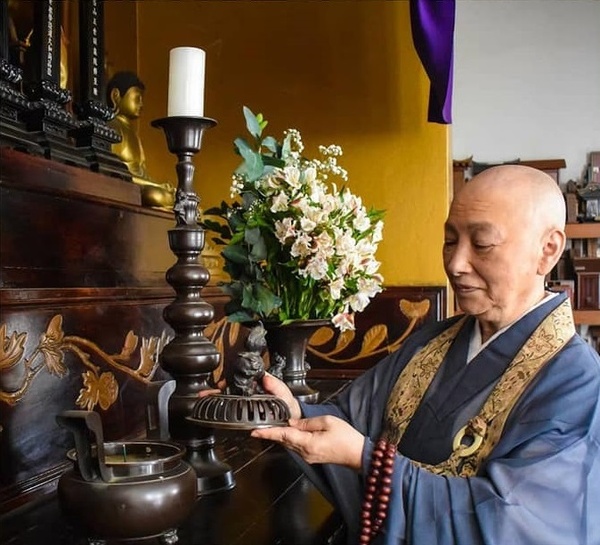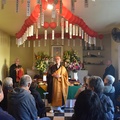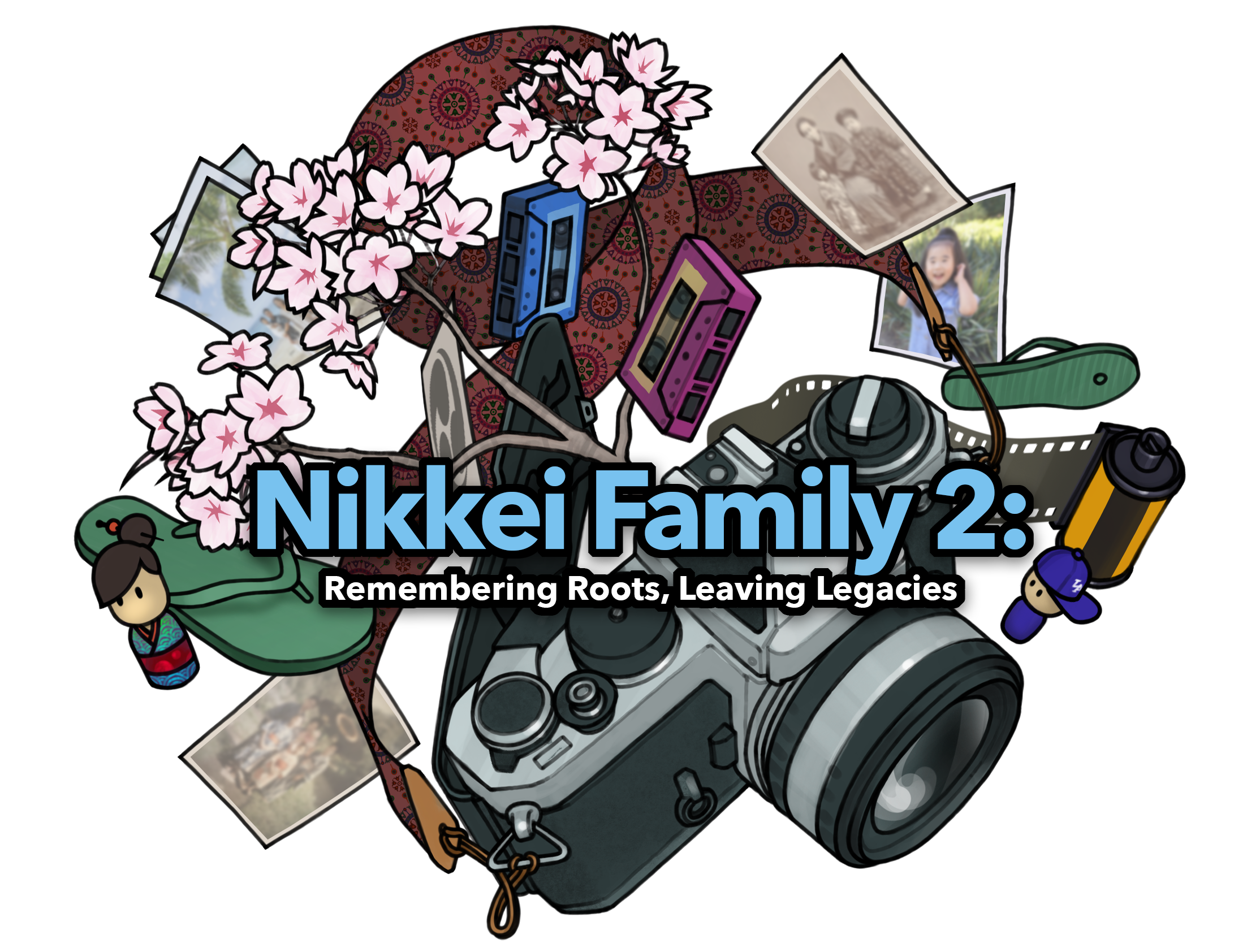
The Venerable Jisen Oshiro, nun of the Sotoshu Zen school, is director of the Soto Zen Peru community. She is Argentine of Nikkei origin and has lived in Peru since 2005. In Lima, in 2006, she founded the Zuihoji temple, located in Miraflores, where zazen meditation practices, liturgical ceremonies, and baika rehearsals (Buddhist chants), among other activities, are carried out. She has ordained the first two Peruvian Zen monks. In this interview, we talk about Zen Buddhism, zazen meditation, and ancestor veneration, among other topics.
On Zen Buddhism and zazen meditation: “In silence we all meet”
Natalia Yoza (NY): Can you explain to us what Zen is?
V. Jisen Oshiro (JO): “Zen” comes from the word “chan” which is meditation in Chinese. And each Buddhist school has a way of developing. Some use a sutra. Others use mantras. But all schools have a basis in meditation.
NY: What is zazen meditation?
JO: Zazen meditation is entering silence. The problem of our time, of all times, is that one cannot listen. You cannot hear the thoughts of others, nor the thoughts of yourself. And, in meditation, because the work is in silence, it is entering into a profound silence. It is said that it is returning to one’s home, to the origin.
NY: Look inside…
JO: Exactly. That’s why you sit looking at the wall. It’s not that you look at the wall if it’s well painted. The gaze is always towards the outside. And turning 180 degrees is turning your gaze towards yourself. To see reality, not cloud ourselves with illusions, with preconceived ideas. That’s what silence is for, so that you don’t get caught up in the twists and turns of language.
NY: There are other types of meditation that are guided and with music…
JO: There they’re really staying outside.
NY: Is Zen Buddhism available to everyone? That is, are zazen meditation practices open to the general public, including people of different religions?
JO: Of course. When I was in Japan, Jesuits and Benedictines from Germany came to Shogoji Monastery to learn about Zen. If [zazen] is done in silence, there is a possibility of understanding. If one is talking about God and another is talking about Buddha and the other is talking about Allah, they do not agree. In the silence we all find one another.
NY: Buddhist monk Gelong Thubten says that meditation is not a luxury, but a necessity today, given today’s fast-paced life. Do you think the same?
JO: No. Everyone has different needs, different stories. Making a clean slate and saying “Oh, this is what you need” is a big lie. There are many paths. Each person has their own. Everyone chooses according to their needs. That is why there are so many Buddhist schools. You can choose. If you don’t want to do meditation, you will find another way. You explore your own path.
NY: You often say that Zen is a 24-hour practice. How to practice Zen in daily life?
JO: You can’t sit in front of the wall 24 hours a day (laughs). But have that same attitude, as if you were doing zazen. That is, keep your head in the present, so that you do not escape into your thoughts and your illusions.
Veneration of ancestors: “The roots are what cannot be seen, but they sustain us”
NY: Now that the obon is approaching, can you explain to us the importance of paying tribute to one’s ancestors?
JO: We come from somewhere. The roots are what is not seen, but they are what sustains us. You see a tree, if it grew well, if it is leafy, if it is stunted, but you do not see the root, which is what supports it. In our society everything is “what I do.” What’s more, the elderly are a nuisance. In this society there is no veneration for the elderly. In Japanese tradition, there is a veneration for the elderly, for those who are already gone, for those who worked, for those who came, crossed the ocean and worked and were even taken to concentration camps. But they formed the Nikkei community. Now, the Nikkei have gone to university, they have studied, they have their own careers.
NY: It is also believed that the ancestors visit us once a year…
JO: Yes, of course. It’s more or less like the Day of the Dead in Mexico. It is considered that in Obon there are 3 days in which the ancestors return and are with us. I always say, “Spiritual food has always been offered.” In the Catholic Church, bread and wine are offered. Ours is simpler. We put the fruits they liked on the family altar, we cook the food they liked, we put the ocha (tea) on it. Here in Peru they put out pisco.
Suffering and compassion in Buddhism: “Compassion is being with the other, seeing them as they really are”
NY: In Buddhism we talk a lot about suffering, which actually helps us grow. What can you tell us about suffering?
JO: Suffering is innate from the moment we are born. The thing is, in our worldview, suffering is terrible. Nobody sees it as an opportunity. Crises bring about growth. When my oldest son was born, after giving birth, I said, “Never again” (laughs). But I have had four children.
NY: What can you tell us about compassion?
JO: Compassion is being with the other. Sometimes that person who has so much difficulty has other values. If you only want good disciples, who know everything, you would lose a lot of things. So, it is seeing reality in reality. See what the other really is. Therefore, mothers, religion, try to ensure that the child does not suffer, but the greatest compassion is to allow him to suffer and grow. Don’t wait until he’s older to get frustrated. Sometimes, you have to let your child make mistakes, otherwise they won’t learn. If you give them everything chewed, that’s no good. The small frustrations every day help you grow.
NY: Can you give us some advice on how to live well, in peace?
JO: Everyone has their own path. I remember that the teachers said “case by case.” You cannot generalize. Not everything has a recipe.
* * * * *
This interview was originally published in Peru Shimpo on August 17, 2023.
© 2024 Natalia Yoza








